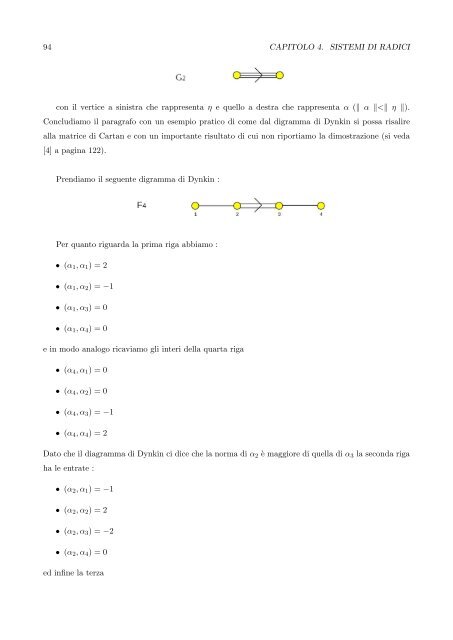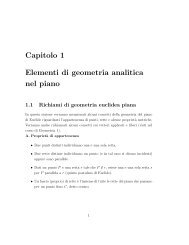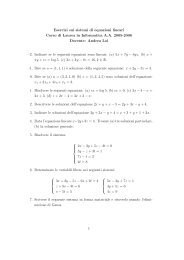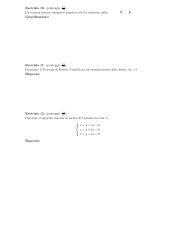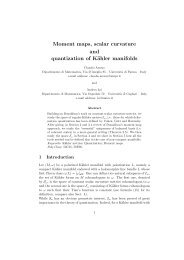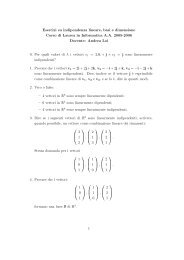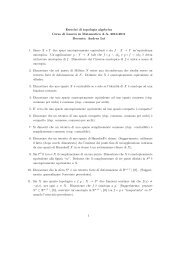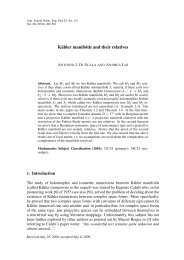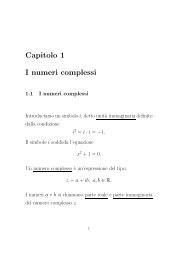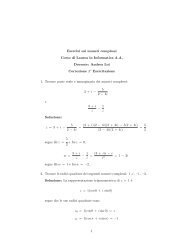Algebre di Lie semisemplici, sistemi di radici e loro classificazione
Algebre di Lie semisemplici, sistemi di radici e loro classificazione
Algebre di Lie semisemplici, sistemi di radici e loro classificazione
You also want an ePaper? Increase the reach of your titles
YUMPU automatically turns print PDFs into web optimized ePapers that Google loves.
94 CAPITOLO 4. SISTEMI DI RADICI<br />
con il vertice a sinistra che rappresenta η e quello a destra che rappresenta α ( α < η ).<br />
Conclu<strong>di</strong>amo il paragrafo con un esempio pratico <strong>di</strong> come dal <strong>di</strong>gramma <strong>di</strong> Dynkin si possa risalire<br />
alla matrice <strong>di</strong> Cartan e con un importante risultato <strong>di</strong> cui non riportiamo la <strong>di</strong>mostrazione (si veda<br />
[4] a pagina 122).<br />
Pren<strong>di</strong>amo il seguente <strong>di</strong>gramma <strong>di</strong> Dynkin :<br />
Per quanto riguarda la prima riga abbiamo :<br />
• (α1, α1) = 2<br />
• (α1, α2) = −1<br />
• (α1, α3) = 0<br />
• (α1, α4) = 0<br />
e in modo analogo ricaviamo gli interi della quarta riga<br />
• (α4, α1) = 0<br />
• (α4, α2) = 0<br />
• (α4, α3) = −1<br />
• (α4, α4) = 2<br />
Dato che il <strong>di</strong>agramma <strong>di</strong> Dynkin ci <strong>di</strong>ce che la norma <strong>di</strong> α2 è maggiore <strong>di</strong> quella <strong>di</strong> α3 la seconda riga<br />
ha le entrate :<br />
• (α2, α1) = −1<br />
• (α2, α2) = 2<br />
• (α2, α3) = −2<br />
• (α2, α4) = 0<br />
ed infine la terza


